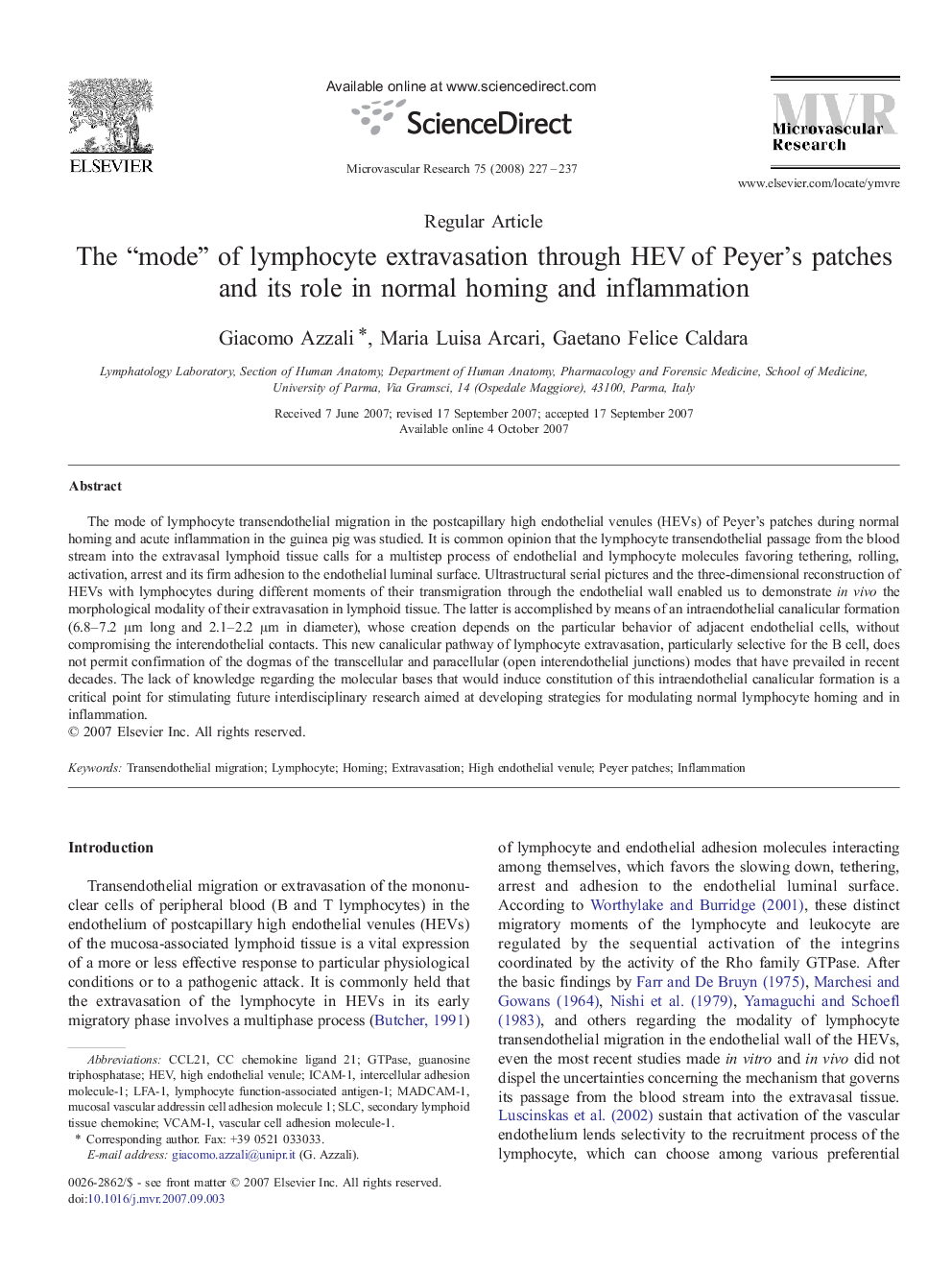| Article ID | Journal | Published Year | Pages | File Type |
|---|---|---|---|---|
| 1995195 | Microvascular Research | 2008 | 11 Pages |
Abstract
The mode of lymphocyte transendothelial migration in the postcapillary high endothelial venules (HEVs) of Peyer's patches during normal homing and acute inflammation in the guinea pig was studied. It is common opinion that the lymphocyte transendothelial passage from the blood stream into the extravasal lymphoid tissue calls for a multistep process of endothelial and lymphocyte molecules favoring tethering, rolling, activation, arrest and its firm adhesion to the endothelial luminal surface. Ultrastructural serial pictures and the three-dimensional reconstruction of HEVs with lymphocytes during different moments of their transmigration through the endothelial wall enabled us to demonstrate in vivo the morphological modality of their extravasation in lymphoid tissue. The latter is accomplished by means of an intraendothelial canalicular formation (6.8-7.2 μm long and 2.1-2.2 μm in diameter), whose creation depends on the particular behavior of adjacent endothelial cells, without compromising the interendothelial contacts. This new canalicular pathway of lymphocyte extravasation, particularly selective for the B cell, does not permit confirmation of the dogmas of the transcellular and paracellular (open interendothelial junctions) modes that have prevailed in recent decades. The lack of knowledge regarding the molecular bases that would induce constitution of this intraendothelial canalicular formation is a critical point for stimulating future interdisciplinary research aimed at developing strategies for modulating normal lymphocyte homing and in inflammation.
Keywords
HEVICAM-1mucosal vascular addressin cell adhesion molecule 1SLCMAdCAM-1GTPaseLFA-1ExtravasationVCAM-1CCL21Lymphocyte function-associated antigen-1inflammationHomingLymphocytetransendothelial migrationintercellular adhesion molecule-1vascular cell adhesion molecule-1high endothelial venulesecondary lymphoid tissue chemokineguanosine triphosphatase
Related Topics
Life Sciences
Biochemistry, Genetics and Molecular Biology
Biochemistry
Authors
Giacomo Azzali, Maria Luisa Arcari, Gaetano Felice Caldara,
